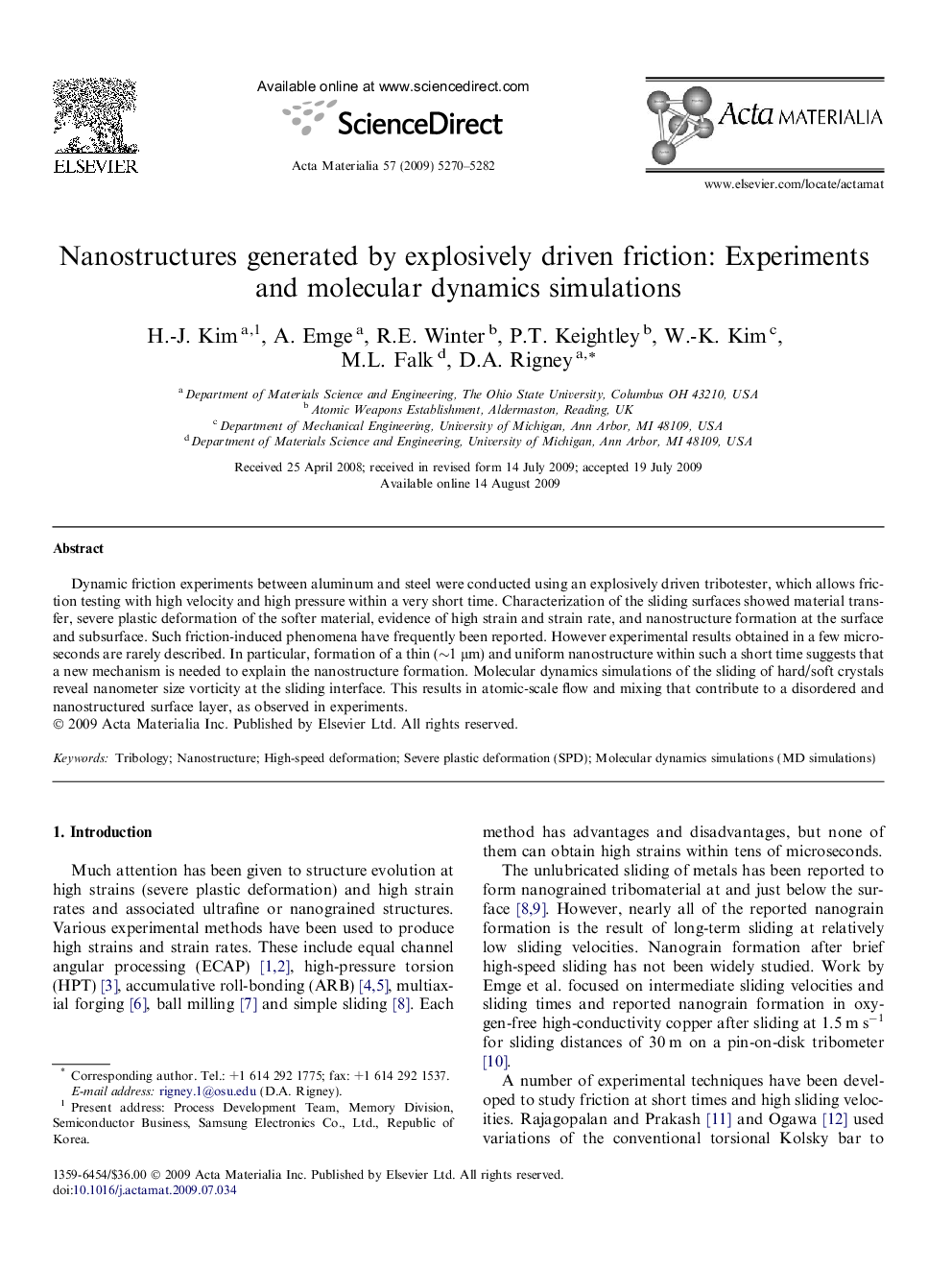| Article ID | Journal | Published Year | Pages | File Type |
|---|---|---|---|---|
| 1449047 | Acta Materialia | 2009 | 13 Pages |
Dynamic friction experiments between aluminum and steel were conducted using an explosively driven tribotester, which allows friction testing with high velocity and high pressure within a very short time. Characterization of the sliding surfaces showed material transfer, severe plastic deformation of the softer material, evidence of high strain and strain rate, and nanostructure formation at the surface and subsurface. Such friction-induced phenomena have frequently been reported. However experimental results obtained in a few microseconds are rarely described. In particular, formation of a thin (∼1 μm) and uniform nanostructure within such a short time suggests that a new mechanism is needed to explain the nanostructure formation. Molecular dynamics simulations of the sliding of hard/soft crystals reveal nanometer size vorticity at the sliding interface. This results in atomic-scale flow and mixing that contribute to a disordered and nanostructured surface layer, as observed in experiments.
